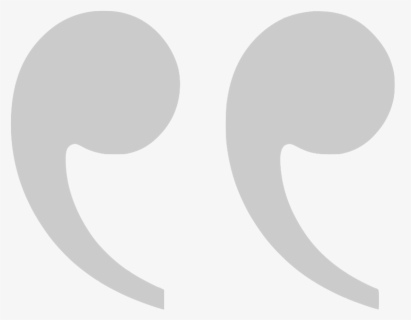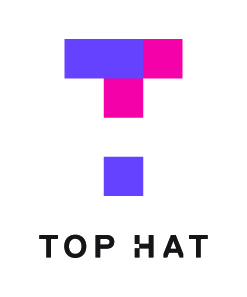 Natalie Pifer is an Assistant Professor here at URI. She joined the faculty in the Fall of 2017, right as CCJ became its own independent academic unit on campus. This marks her sixth year of teaching at URI. In the past, she had taught CCJ 230: Crime & Delinquency, CCJ274: Criminal Justice System, which are introductory-level classes, and CCJ331: Punishment & Corrections and CCJ 476: Policy, Crime, & Justice, which are upper division classes for CCJ majors During the Fall 2022 semester, she is currently , teaching CCJ230H: Honors Section of Crime & Delinquency, and CCJ476: Policy, Crime, & Justice. When teaching introductory classes, especially for first-semester freshmen, she noticed that students would be hesitant to participate in classroom discussions and answer questions, perhaps because they were overwhelmed by the adjustment to college.g. This discovery led her to integrate Top Hat into her classroom to aid herself and her students in participating.
Natalie Pifer is an Assistant Professor here at URI. She joined the faculty in the Fall of 2017, right as CCJ became its own independent academic unit on campus. This marks her sixth year of teaching at URI. In the past, she had taught CCJ 230: Crime & Delinquency, CCJ274: Criminal Justice System, which are introductory-level classes, and CCJ331: Punishment & Corrections and CCJ 476: Policy, Crime, & Justice, which are upper division classes for CCJ majors During the Fall 2022 semester, she is currently , teaching CCJ230H: Honors Section of Crime & Delinquency, and CCJ476: Policy, Crime, & Justice. When teaching introductory classes, especially for first-semester freshmen, she noticed that students would be hesitant to participate in classroom discussions and answer questions, perhaps because they were overwhelmed by the adjustment to college.g. This discovery led her to integrate Top Hat into her classroom to aid herself and her students in participating.

“You really only have peak engagement for about 12 to 15 min, and then people just naturally start to lose the ability to do deep focus. That’s part of the reason that we have discussion questions baked into class time is because it allows people to have a cognitive reset of that deep focus” – Natalie Pifer
Tool Spotlight
Natalie demonstrates using Top Hat in class. .
Video created by Natalie Pifer.
Teaching Tool Usage
 Top Hat is classroom response software that fits into the category of classroom technology that allows professors to pose questions to the class using a variety of question types, including word cloud, multiple choice, matching, click-on-target, and 10 other types to encourage class participation. It is a clicker tool that can be accessed from any electronic device and gives feedback to the professor right away. Within the classroom, Natalie uses Top Hat to “not only facilitate participation but also as a random, low-stakes but still coercive reading pop quizzes” to foster accountability to class materials. Top Hat aids her classes in a way that her students can receive participation points, as well as giving her the ability to see if the majority of students were able to understand the question or lesson or if she needs to go back and review a bit more. She also found the integration of Top Hat to Brightspace to be incredibly useful, especially when it comes to grading for participation.
Top Hat is classroom response software that fits into the category of classroom technology that allows professors to pose questions to the class using a variety of question types, including word cloud, multiple choice, matching, click-on-target, and 10 other types to encourage class participation. It is a clicker tool that can be accessed from any electronic device and gives feedback to the professor right away. Within the classroom, Natalie uses Top Hat to “not only facilitate participation but also as a random, low-stakes but still coercive reading pop quizzes” to foster accountability to class materials. Top Hat aids her classes in a way that her students can receive participation points, as well as giving her the ability to see if the majority of students were able to understand the question or lesson or if she needs to go back and review a bit more. She also found the integration of Top Hat to Brightspace to be incredibly useful, especially when it comes to grading for participation.
The only negative aspect Natalie can find with Top Hat is that “it’s not free.” Students will have to purchase a software license, and it is not the most inexpensive product. Currently, the subscription for the tool is $28 for a semester, and students will have to purchase it again for the next semester if another class is using Top Hat. An annual license is also available for $43.00 through the Campus Store, which is on the ITS Service page. However, Natalie had also mentioned that if a faculty member is considering using Top Hat, they should talk to a Top Hat representative and ask for a number of scholarship codes that they can give to students, which will give a free subscription for the semester. URI IT also has Top Hat representatives from time to time offering training to faculty members wanting to try Top Hat. Top Hat also has comprehensive KB Articles to answer common questions and how-to articles.
Natalie has also noted that Top Hat does have a free version for students called Top Hat Basic, but there are functions from the paid version that are unavailable, such as seeing how individual students are answering. She thinks that if a faculty member would like a purely polling feature to gauge how students are doing at the moment, then Top Hat Basic would be ideal, but if they would like more functions within it (like the gradebook), then they will have to have students purchase a subscription.
Student Experience & Feedback
Natalie noticed a big difference between not using Top Hat and using it. Before implementing Top Hat, she had noticed that, despite student participation, there was a majority of students who showed up to class unprepared and unable to benefit from the discussion of the readings and the core concepts within them. For example, in one semester prior to using Top, , the average midterm score in her class was 61%. However, after implementing Top Hat into her classroom, students developed heightened importance for class preparation which, in the end, led to an increased Midterm score of 73% during the next semester.
When it comes to student feedback on the tool, many have reported that they have really liked the tool and appreciated it. According to one student comment on Natalie’s IDEA feedback from Fall 2019, “we had lots of opportunities to participate through Top Hat, which I really liked because I am not one for raising my hand and participating in that way.” Additionally, another student commented on the Spring 2019 IDEA feedback that, “I liked the Top Hat questions that would demonstrate understanding of the reading, and those that would ask about things we had previously learned to determine if we could apply a scenario and determine what theory was best for it.”
Overall, the consensus is that Top Hat has greatly benefited not only her classroom but also her students. It eases the students’ nerves about having to participate in class and possibly getting an answer wrong, and benefits Natalie by getting the feedback she needs to know where her students stand.
Natalie Pifer
Assistant Professor
Criminology and Criminal Justice Department
Natalie Pifer incorporates Top Hat within her lessons to allow students to diversify their participation and gain feedback from that participation.
Top Hat Documentation- https://its.uri.edu/services/94530c3f60079ebae812fc44caa5a8e20ef2b79003/
View Previous Ed Tech Faculty Spotlight with Alicia Vaandering on Padlet and Powtoon
View Previous Ed Tech Faculty Spotlight with Erika Fiore on Notability
View Previous Ed Tech Faculty Spotlight with Amanda Izenstark on Jamboard
